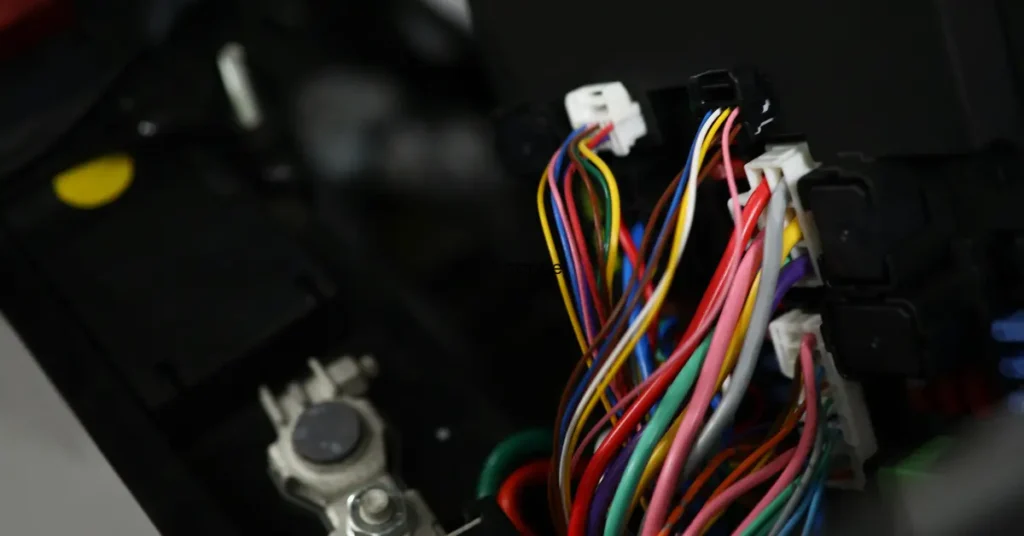
The P0340 BMW error code is related to the camshaft position sensor, an essential component in the engine management system.
This error code indicates that the sensor is not functioning correctly, leading to potential issues with engine performance and reliability.
In this article, we will delve into the details of the P0340 BMW error code, its causes, symptoms, and possible solutions.
Contents
Understanding the Camshaft Position Sensor
Before diving into the specifics of the P0340 BMW error code, it’s important to grasp the role of the camshaft position sensor. The camshaft position sensor is responsible for monitoring the rotational speed and position of the camshaft.
This information is crucial for the engine control unit (ECU) as it determines the precise timing of fuel injection, ignition, and valve operation.
The camshaft position sensor typically consists of a hall effect sensor or a magnetic reluctor ring. It converts the camshaft’s rotational movement into electrical signals, which the ECU can interpret and utilize to ensure optimal engine performance.
How Does the Camshaft Position Sensor Work?
The camshaft position sensor works by using either a hall effect sensor or a magnetic reluctor ring. The hall effect sensor consists of a small magnet and a semiconductor.
As the camshaft rotates, the magnet passes by the semiconductor, creating a change in the magnetic field. This change generates a voltage signal, which is sent to the ECU for analysis.
On the other hand, the magnetic reluctor ring consists of teeth or notches that interrupt the magnetic field as the camshaft rotates. This interruption produces a change in the magnetic flux, resulting in a voltage signal that is sent to the ECU.
It’s important to note that the specific design and operation of the camshaft position sensor may vary depending on the vehicle’s make and model.
However, the overall purpose remains the same – to provide accurate and timely information to the ECU.
Causes of the P0340 BMW Error Code
Several factors can contribute to the triggering of the P0340 BMW error code. Identifying the root cause is crucial for effectively addressing the issue. Here are some potential causes:
Faulty Camshaft Position Sensor
The most common cause of the P0340 BMW error code is a defective or malfunctioning camshaft position sensor. Over time, these sensors can wear out or become damaged, leading to incorrect readings or no signal at all.
It’s important to note that a faulty sensor can affect engine performance and lead to other issues if not addressed promptly.
Wiring Issues

Another possible cause of the P0340 BMW error code is wiring problems. The wiring harness connected to the camshaft position sensor may suffer from damage, corrosion, or loose connections. Any disruption in the signal transmission can trigger the P0340 error code.
It’s essential to thoroughly inspect the wiring and repair or replace any faulty components.
Sensor Alignment
The camshaft position sensor relies on accurate alignment with the camshaft. If the sensor is misaligned or not properly installed, it can result in erratic readings and trigger the P0340 error code.
It’s crucial to ensure that the sensor is correctly aligned and securely installed during installation or replacement.
Timing Belt or Chain Issues
A worn-out or improperly tensioned timing belt or chain can cause the camshaft and crankshaft to fall out of sync. This misalignment can lead to the triggering of the P0340 error code.
Regular maintenance and timely replacement of the timing belt or chain can help prevent this issue.
Symptoms of the P0340 Code
When the P0340 BMW error code is present, you may experience various symptoms that indicate potential issues with the camshaft position sensor.
Unraveling the intricacies of the P0340 code isn’t just about your car—it’s about deciphering a common language among vehicles. This understanding seamlessly extends to the P0341 code, presenting a panoramic view of shared automotive experiences.
These symptoms can include:
Check Engine Light
The most common and obvious symptom is the illumination of the check engine light on the dashboard. The check engine light serves as an indicator of a potential issue within the engine management system.
It’s important not to ignore this warning and address the problem promptly.
Decreased Engine Performance
A faulty camshaft position sensor can negatively impact engine performance. You may notice a decrease in power, rough idling, or difficulty starting the engine.
These issues can affect the overall driving experience and should be resolved to ensure optimal performance.
Engine Misfires

Inaccurate readings from the camshaft position sensor can lead to misfires in the engine cylinders. This can result in erratic engine behavior, such as sputtering or hesitation during acceleration.
Engine misfires can also cause damage to other engine components if left unaddressed.
Stalling or Difficulty in Starting
The P0340 error code can cause intermittent stalling or difficulty in starting the engine. This can be especially problematic during cold starts or after the vehicle has been sitting for an extended period.
It’s important to address these issues promptly to prevent further complications.
Resolving the P0340 Error Code
To rectify the P0340 BMW error code, several steps can be taken depending on the underlying cause. Here are some potential solutions:
Inspecting and Replacing the Camshaft Position Sensor
Begin by checking the camshaft position sensor for any visible signs of damage or wear. If necessary, replace the sensor with a new, high-quality component.
Ensure that the new sensor is properly aligned and securely installed. It’s important to use genuine or OEM parts to ensure compatibility and reliability.
Inspecting and Repairing Wiring Issues
Thoroughly inspect the wiring harness connected to the camshaft position sensor. Look for any signs of damage, corrosion, or loose connections. Repair or replace any faulty wiring as needed.
It’s crucial to ensure proper electrical connections for accurate sensor readings.
Checking the Timing Belt or Chain
If the timing belt or chain is suspected to be the cause of the P0340 error code, it’s crucial to inspect and address any issues promptly. A worn-out or misaligned timing belt or chain should be replaced by a professional mechanic to restore proper engine synchronization.
Regular maintenance and timely replacement of the timing belt or chain can help prevent this issue.
Clearing the Error Code
Once the necessary repairs have been made, use an OBD-II scanner to clear the P0340 error code. This will reset the check engine light and allow you to monitor the system for any recurring issues.
It’s important to ensure that the repairs have effectively resolved the problem before clearing the error code.
Conclusion
The P0340 BMW error code related to the camshaft position sensor is a common issue that can affect engine performance and reliability.
By understanding the causes, symptoms, and potential solutions, you can effectively diagnose and address this error code.
If you’re unsure or uncomfortable with performing the repairs yourself, it’s always recommended to consult a qualified mechanic to ensure proper resolution and prevent further complications.
Remember to prioritize regular maintenance to prevent potential issues and ensure the longevity of your vehicle.
FAQ
Q: What is the P0340 BMW error code?
The P0340 BMW error code is related to the camshaft position sensor, indicating that the sensor is not functioning correctly.
Q: What causes the P0340 BMW error code?
The P0340 BMW error code can be caused by a faulty camshaft position sensor, wiring issues, sensor alignment problems, or timing belt/chain issues.
Q: What are the symptoms of the P0340 BMW error code?
Symptoms of the P0340 BMW error code can include the illumination of the check engine light, decreased engine performance, engine misfires, and stalling or difficulty in starting the engine.
Q: How can I resolve the P0340 BMW error code?
To resolve the P0340 BMW error code, you can inspect and replace the camshaft position sensor, inspect and repair wiring issues, check the timing belt or chain, and clear the error code using an OBD-II scanner after making the necessary repairs.



